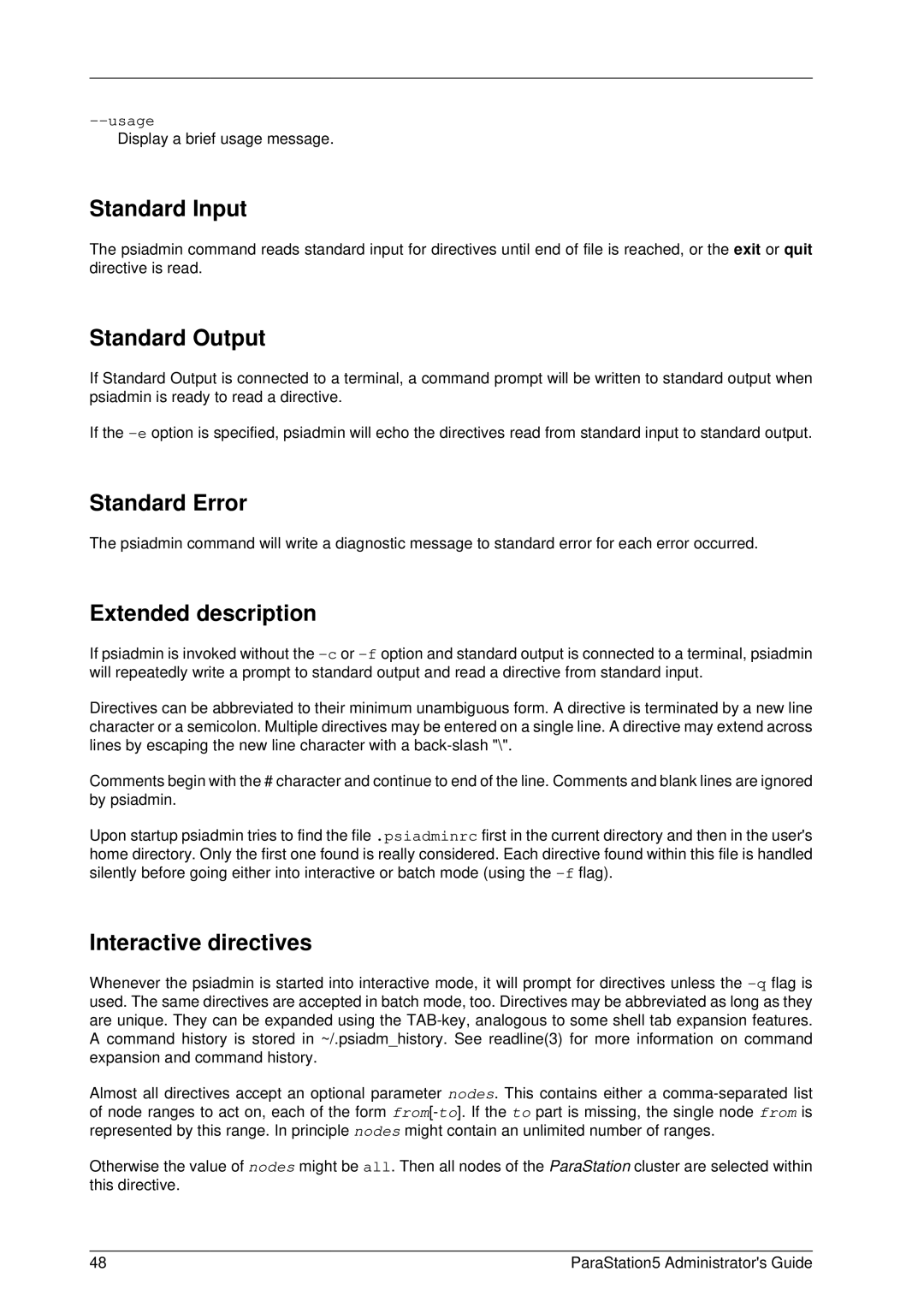
Display a brief usage message.
Standard Input
The psiadmin command reads standard input for directives until end of file is reached, or the exit or quit directive is read.
Standard Output
If Standard Output is connected to a terminal, a command prompt will be written to standard output when psiadmin is ready to read a directive.
If the
Standard Error
The psiadmin command will write a diagnostic message to standard error for each error occurred.
Extended description
If psiadmin is invoked without the
Directives can be abbreviated to their minimum unambiguous form. A directive is terminated by a new line character or a semicolon. Multiple directives may be entered on a single line. A directive may extend across lines by escaping the new line character with a
Comments begin with the # character and continue to end of the line. Comments and blank lines are ignored by psiadmin.
Upon startup psiadmin tries to find the file .psiadminrc first in the current directory and then in the user's home directory. Only the first one found is really considered. Each directive found within this file is handled silently before going either into interactive or batch mode (using the
Interactive directives
Whenever the psiadmin is started into interactive mode, it will prompt for directives unless the
Almost all directives accept an optional parameter nodes. This contains either a
Otherwise the value of nodes might be all. Then all nodes of the ParaStation cluster are selected within this directive.
48 | ParaStation5 Administrator's Guide |
